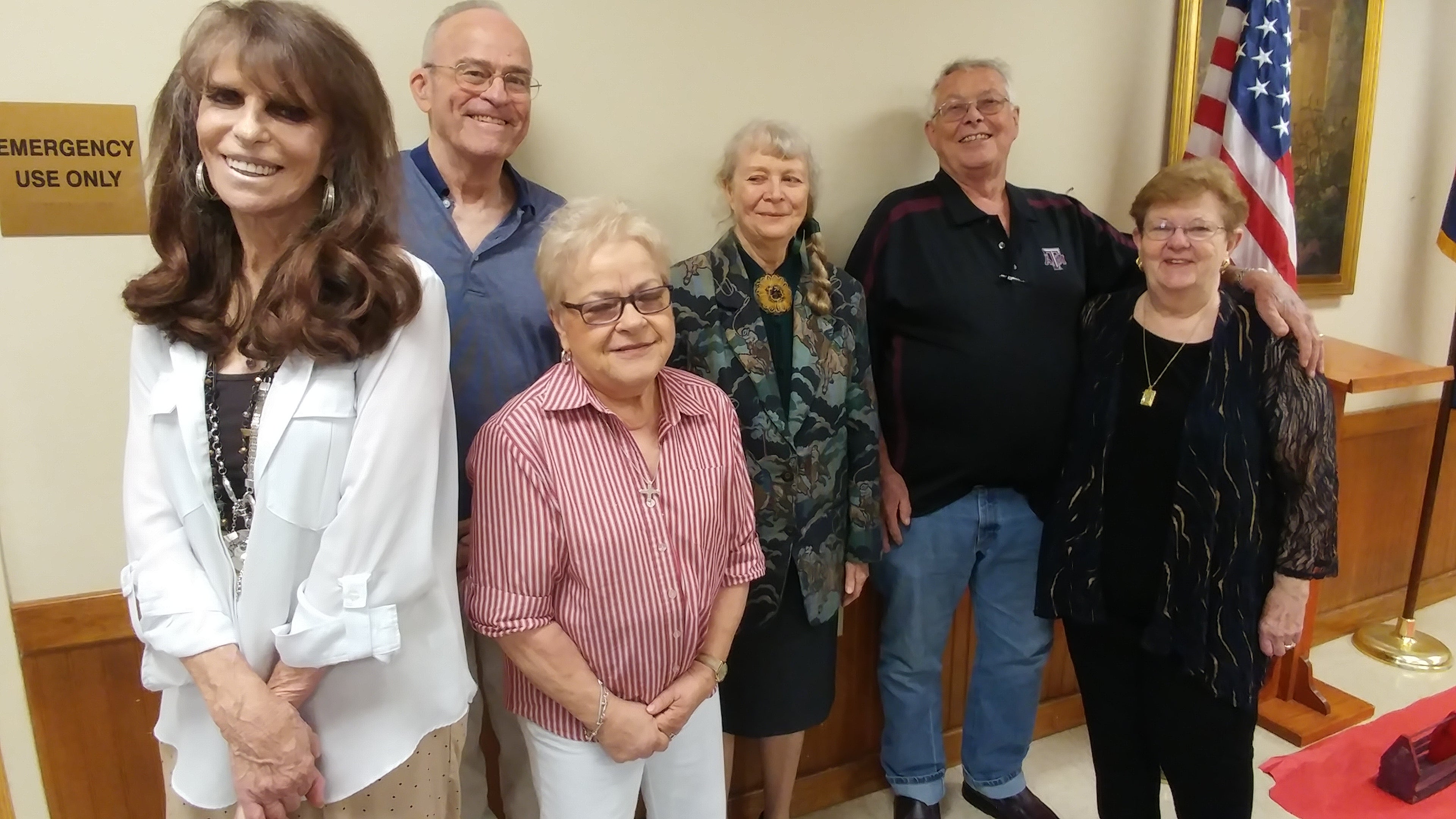Boehme speaks on Cowboy of Color exhibit
Published 5:04 pm Monday, June 25, 2018

- Photo courtesy of Anne Payne Stark Museum Curator Sarah Boehme, PhD, third from right, gave an uplifting presentation, during the Wednesday Golden K Kiwanis meeting, of two current exhibitions at the Stark Museum of Art, "Portraits from Cowboys of Color: Photographs by Don Russell," and "Cowboy Legends and Life: From 1886 to 2016," on view through September 29, 2018.
By Anne Payne
The Orange Leader
Take a leisurely stroll through The Stark Museum of Art in Orange and first tour the 21 photos recently donated by noted cowboy photographer and contemporary artist Don Russell of McKinney, Texas. His works are part of two exhibitions, “Portraits from Cowboys of Color: Photographs by Don Russell,” as well as “Cowboy Legends and Life: From 1886 to 2016.”
Russell works in series and weeks, while implementing the fine art of black and white photography, but he has found color is very important, according to Dr. Sarah Boehme, Stark Museum Curator.
Russell, a native of Kentucky, lived his professional life as an electrical engineer at Texas Instruments.
Boehme adds, “Russell was at rodeos with photo set-ups, back drops, and persuasion for cowboys to pose for pictures for two years, attending rodeos of Cowboys of Color, including African-Americans, Hispanics, and Native Americans.”
Russell prides himself with orally interpreting cowboys, composing books, and photographing the cowpokes.
For example, Bailey Taylor Hall, Jr., known as The Prairie Kid, always wore a white shirt, becoming his trademark for photos.
Abe Morris, a rodeo announcer, composed the history of the African-American cowboy.
Boehme also notes, “We are very excited about acquiring these photos; up to about 25 percent of African-American cowboys of the Trail Drive Period herded cattle to a slaughter house or to the East coast, so being a cowboy was not a high prestige occupation, but one of low status.”
As a result, cowboys did not appear in art very often. However, there were African- American cowboys who entered historical records of roping and taking-down steer, known as bull dogging or steer wrestling. These cowboys actually were known to bite the lip of a steer, quite astonishingly.
Cleo Hearne, the founder of Cowboys of Color, was a calf roper, but it was not a full-time position.
African-Americans, notes Boehme, would have their own rodeos for entertainment, also featuring Hispanics and Native Americans, but not for big money. Hearne would then produce the rodeo promotions.
These Cowboys of Color rodeos grew out of the “then-tradition” of racial segregation, now a thing of the past, hopefully.
Meanwhile, Buffalo Bill Cody started his Wild West Shows with complete diversity. Cody even employed Chief Sitting Bull and some of his Native Americans, taking them and his show overseas, paying all of his employees equally.
Some notables on the circuit are Michelle Bacchus, an African-American female barrel racer from Okmulgee, Oklahoma, who first began barrel racing in 2015 after a divorce. Another is Jerry Diaz, an Hispanic trick-roper and rodeo promoter from Fort Worth, Texas, as well as Ryan Roberts, a Native-American bull rider from Oklahoma City. Finally, Myrtis Dightman, a bull rider from Crockett, Texas, is considered to be the “Jackie Robinson of Bull Riding,” as of 2016. Dightman is on the cover of the recent issue of Texas Monthly magazine.
The American cowboy or cowgirl becomes a symbol of independence, a person of his or her word, with a sense of independence and endurance.
A panel discussion of Cowboys of Color will be held 2 p.m. -3:30 p.m. on Saturday, July 28, at the Stark Museum of Art in Orange. The panel will be composed of Russell, Hearne, Bailey, and Dightman.
Another Stark Museum event will be Family Day, Saturday, September 22, 10 a.m. – 3 p.m., where Jason Griffin, another well-known cowboy, may likely be a guest speaker. Details are still in progress.





